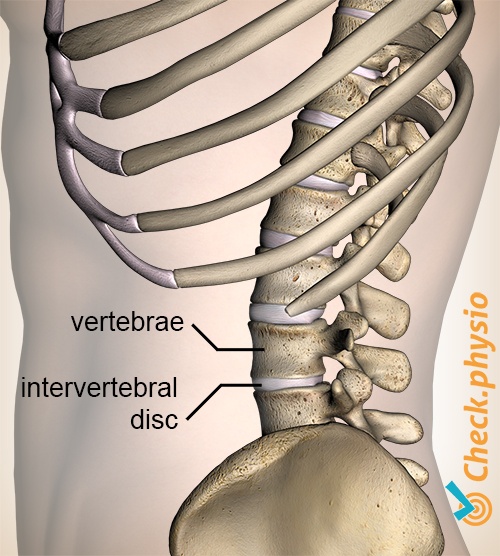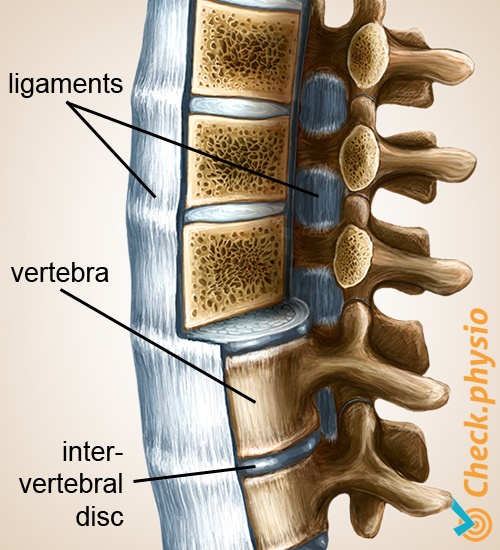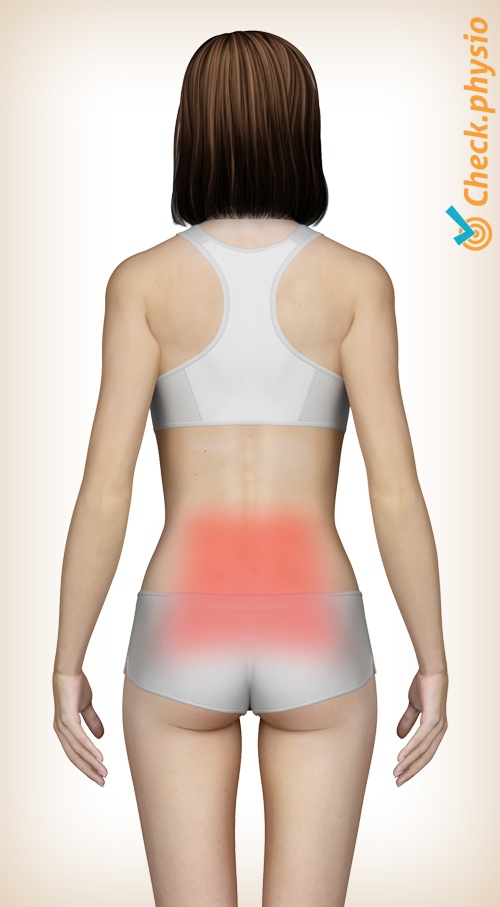- Conditions
- Lumbar instability
Lumbar instability Spinal instability / lower back pain
Introduction
Over the last few years, instability of the lower back has increasingly been implicated as a cause of lower back pain. Disrupted stability of the lower back may result in an unstable spinal column and can cause chronic lower back pain.
The spinal column is formed by vertebrae (bones) stacked on top of each other. In order to ensure that the vertebrae remain neatly stacked on top of each other during movement, there are capsules, ligaments, inter-vertebral discs and muscles that all work closely together. They maintain the stability of the spinal column during the different movements that the back can make. If they are not successful and the vertebrae make excessive or uncontrolled movements in relation to each other, we call this instability.

Description of condition
We distinguish between two types of stability: mechanical stability and functional stability: The mechanical stability is provided by the ligaments, capsules and intervertebral discs. These are passive structures that support the fully extended movements of the vertebrae in relation to each other.
Functional stability is provided by the deeper muscles, which contract at the correct times to maintain stability of the spinal column. These are especially the multifidus muscle and the transverse abdominal muscle. They form a type of corset immediately around the spinal column and need to be controlled very precisely. This distinguishes them from another group of muscles that are larger and located closer to the surface.
Instability of the lower back disrupts mechanical and/or functional stability. As any movements of the spinal column are no longer supported properly, this can result in overloading or damage to structures. This is what we experience as back pain.
Cause and history
Various causes have been linked to instability. Often one cause will lead to another and mechanical instability and functional instability will be present simultaneously. We will mention three possible causes here.
Firstly, damage to the capsules and ligaments can cause mechanical instability. This is sometimes complicated by the fact that the nerve system that tells the deeper muscles exactly how to contract is also disrupted. As a result, the deeper muscles struggle even more to correct the (mechanical) instability.
Another cause can be the thinning of an intervertebral disc. This happens as we age, through prolonged overloading or as a result of - for example - a herniated disc. This creates more movement between the vertebrae, resulting in instability.
A third cause appears to be the fact that the deeper back muscles sometimes no longer function properly after recovering from a period of back pain. The cause of this is unknown, but the dysfunction of the muscles (functional instability) places extra pressure on the capsules, ligaments and intervertebral discs (mechanical stability). These structures can become overloaded or damaged as a result.
Signs & symptoms
The signs and symptoms of back instability are not clearly described. A lot of research is still being performed. We have listed a number of symptoms below that may indicate instability of the lower back.
- Pain in the lower back.
- Sometimes when moving, the person will feel something shift in their back.
- The pain may occur with prolonged standing, sitting, lying down (e.g. having a lie-in) and prolonged walking (strolling).
- Start-up pain when getting up from a low seated position.
- Pain when leaning forward for a prolonged period.
- Increased muscle tension.
- Decreased mobility of the lower back.
- Symptoms associated with lifting, raising or carrying.
- Decreased general physical condition.
Diagnosis
The healthcare professional asks about the back complaints and their cause. During a physical examination, the spine is checked for mobility, and several tests follow to assess the active and passive stability of the lower back. Additional tests are usually unnecessary to make a diagnosis.
Treatment and recovery
The deeper, stabilizing muscles of the spinal column need to be trained to deal with the instability. If these muscles contract correctly and form a good corset around the spinal column, then the instability can be (partly) resolved. The exercises are primarily aimed at controlling the muscles. This requires a lot of concentration. Training makes the muscles stronger and improves muscle stamina.
Exercises are explained under the supervision of a physiotherapist, to check that the correct muscles are being tensed. At first, the contraction is a very conscious movement. After a while, the patient should start to do this automatically and subconsciously while performing daily activities. It may be sensible to halt the strength training of the larger and more superficial muscle groups temporarily.
Exercises
Follow the exercise program here with specific exercises for lower back instability.
More info
You can check your symptoms using the online physiotherapy check or make an appointment with a physiotherapy practice in your locality.
References
El, A. van der (2007) Manuele diagnostiek. Wervelkolom Rotterdam: Uitgeverij Manthel.
Beazell, J.R., Mullins, M. & Grindstaff, T.L. (2010) Lumbar instability: an evolving and challenging concept J Man Manip Ther. 2010 Mar;18(1):9-14.
Cleland, J.A. & Koppenhaver, S. (2011) Netter's orthopaedic clinical examination: an evidence-based approach 2nd ed. Philadelphia: Saunders Elsevier.


